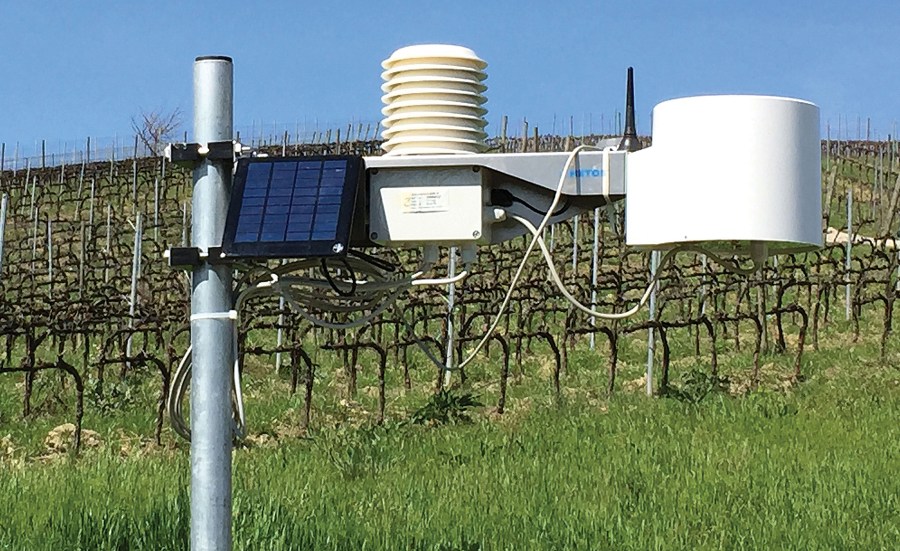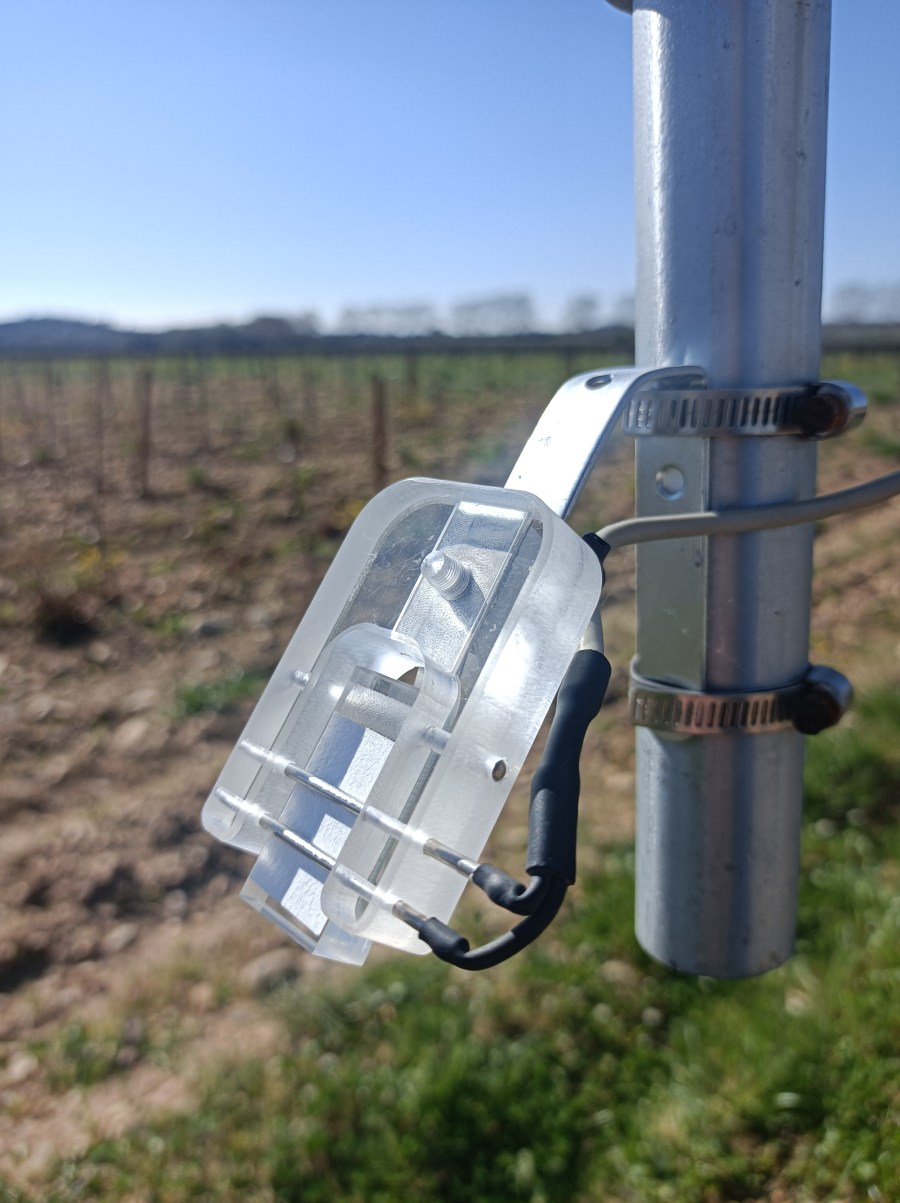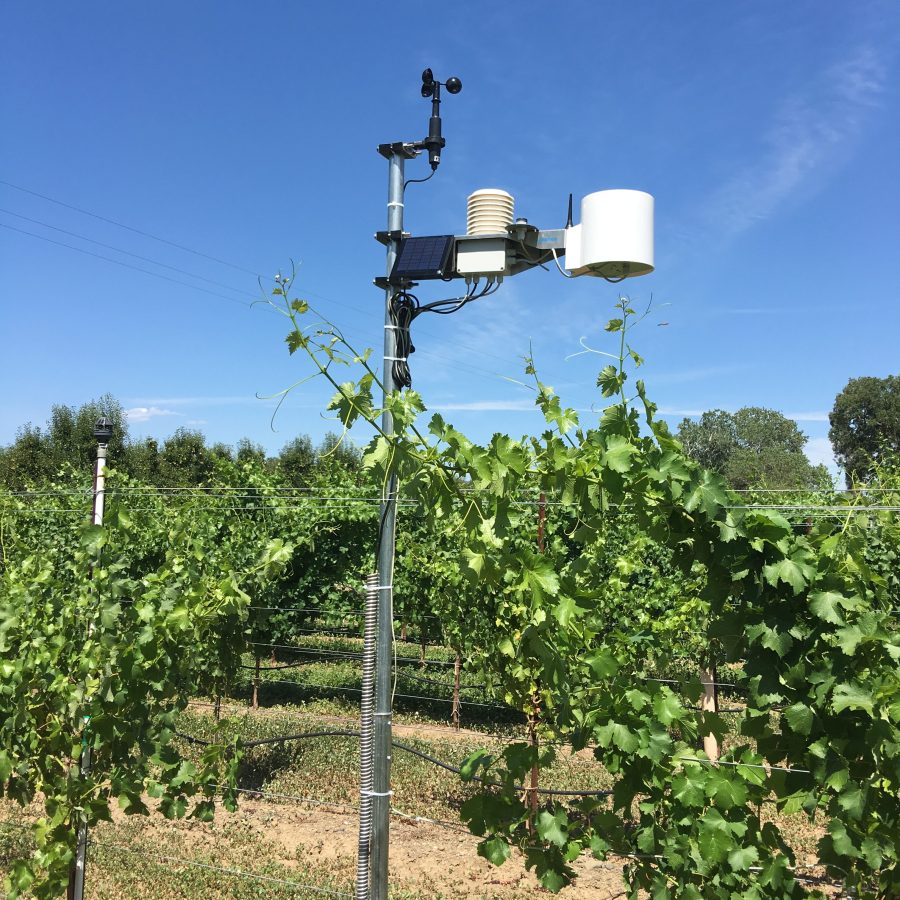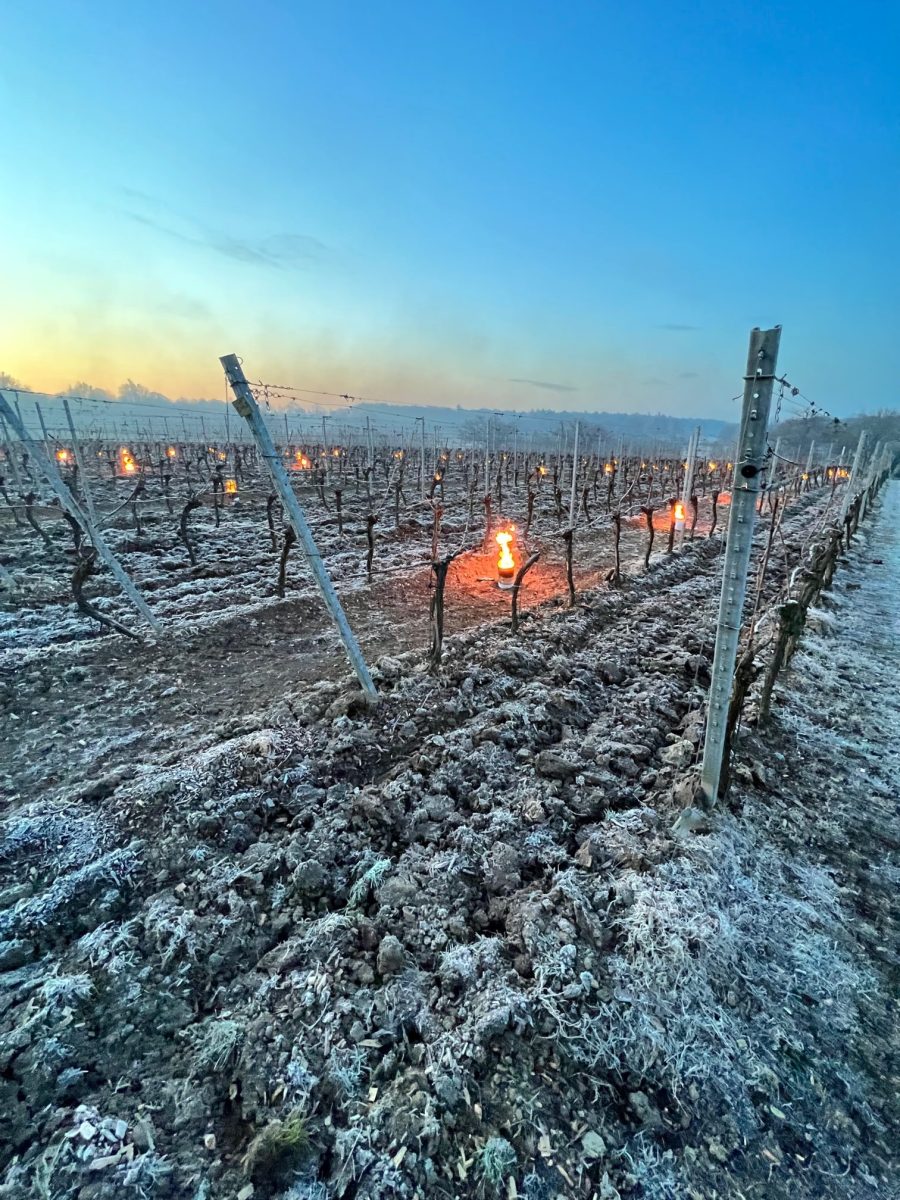Internet-connected devices and wireless communication are enabling vineyard managers to instantly access data and information to better manage their crops and make accurate day-to-day decisions.
Over the past 39 years Pessl Instruments, known for its METOS brand of in-field sensors, has been developing technology to support growers across the globe to use field-specific climatic data and AI-powered analysis to make better predictions of the risk of frost, diseases, insects, and crop irrigation needs.
Vineyard talked to Pessl Instruments’ CEO and founder, Gottfried Pessl, to understand how internet-connected technology is making a critical difference to vineyard management and wine production in the UK and around the world.
“From the mid-1990s we saw the opportunity to predict diseases, not just react to them. We started with apples, and prediction of apple scab using weather stations to measure climatic conditions and run simulations using the collected data. We then expanded into other crops, including vines. Now growers around the world can make more accurate decisions based on predictions of disease, insect, and frost risk, and crop irrigation needs,” said Gottfried.
“The rapid growth of cellular networks even in rural areas meant that this wireless data collection and processing became accessible to nearly everyone,” he said.
The development of mobile phone technology allowed the company to develop an app in 2010 to display the data, and provide an assessment of risk, giving growers and managers the climatic data they needed, without having to physically visit the vineyard or be present in the office.
“This near-instant access to data and risk modelling reduces mistakes and supports more accurate decision-making, leading to better planning and more informed use of plant protection and water inputs, and more targeted frost protection measures,” he explained.
“With accurate forecasts and actual climatic data, growers are able to target frost measures to where they are most needed, apply insecticides only where thresholds have been met, or fungicides only when climatic conditions indicate an upcoming disease risk period, for example.”
New advances in imaging analysis mean that insect pests can also be monitored remotely, without having to physically inspect in-field traps. Pessl Instruments’ software has been trained to identify particular species of insect pests caught in traps, such as spotted wing drosophila and moth species, and alert managers when pre-determined thresholds have been met. Sprays can then be timed more accurately and pin-pointed to fields according to actual threat.
Not only can vineyard managers use this technology on a day-to-day basis, but data collected over time gives information on trends, and provides a longer-term outlook for future planning decisions.
He said, “You can use a range of sensors across a vineyard, taking into account different topography, varieties and microclimates, to give you more accurate information about frost risks and disease pressure. This allows you to understand better the risks across those crops in the short, medium, and long-term, and adjust any crop protection measures accordingly.
“This can also be useful when considering new plantings and can inform variety choice, growing method, and crop protection needs.”
Pessl Instruments has gone on to secure integrations for its METOS brand sensors and stations through APIs with the most used farm software management systems worldwide, and many other apps and applications, including RIMpro.



Sensors aid frost protection
The Windsor Great Park Vineyard, run by Laithwaites, has 17,000 vines growing across the three-hectare site, with two METOS temperature and humidity sensors and a weather station installed since 2013.
Anne Linder, who founded the vineyard in 2010 and is still involved today, she explained how they use the sensors.
She said: “This is an un-manned site, and our biggest concern is spring frost. Receiving the alerts remotely from the sensors means we have enough time for one of our team to get to site and light our frost candles.
“The site is on a slope facing north to south, with a 30m drop from top to bottom, and after a few years we moved the weather station down into the slight dip at the bottom as we learned that this was the highest risk area for frost.
“We can now see a variation of three degrees across the three weather stations, which can make a big difference to the number of candles we have to light. The sensors have been invaluable and definitely helped us to reduce costs by localising our frost candles to where they are really needed.”




